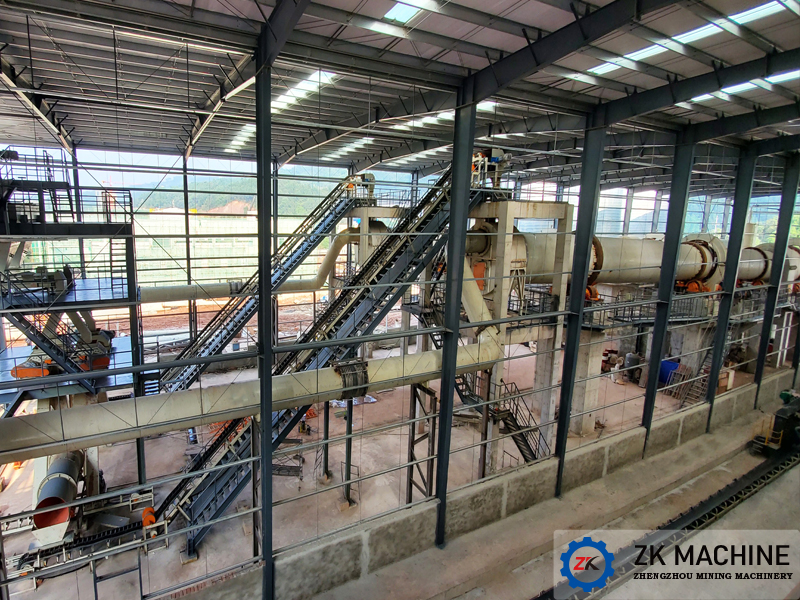To understand the principle of ceramsite expansion, it is necessary to first understand the process of ceramsite firing.
Take sludge clay ceramsite as an example to understand the general process of ceramsite firing. After several processes of raw material mixing, aging, granulation, calcination, cooling and screening, qualified finished ceramsite is produced.
The expansion of ceramsite is in the calcination section, but the effect of ceramsite expansion is the foundation laid from the selection of raw materials.
The main components of the raw materials of ceramsite are several inorganic oxides that form the glass phase, such as aluminum oxide, silicon oxide, iron oxide, potassium oxide, sodium oxide, magnesium oxide, etc. Under the combined action of these materials, the ceramsite can expand smoothly, and iron oxide is the main foaming material.
After the ceramsite raw balls are made, they enter the rotary kiln for calcination. In the first half of the drying kiln, the rotation speed is slow and the length is long. This is to make the ceramsite heat up evenly and slowly, and slowly evaporate the water in the ceramsite, so as to prevent the water from evaporating too quickly, and the water vapor will make the ceramsite raw meal ball break. The temperature when entering the calcining kiln is about 800°C. At this time, the moisture in the ceramsite pellets has basically been evaporated, and the iron oxide begins to decompose or reduce, producing carbon dioxide gas.
At this time, it is necessary to quickly heat up to the melting temperature of the ceramsite. The surface of the ceramsite material ball is in a molten state, forming a glass phase. At this time, the surface of the ceramsite is like a layer of melted sugar. There are no pores, and iron oxide is produced. The gas cannot escape from the inside of the ceramsite, so the ceramsite is expanded.
After 10 to 20 minutes, the ceramsite passes through the high temperature zone and goes to the discharge section of the kiln head. The temperature decreases and cools down, forming a dense enamel layer on the surface and porous expanded ceramsite inside.
Among them, iron oxide, as the main foaming material, the main component that affects the expansion effect of ceramsite, accounts for about 5% of the raw materials. Of course, the foaming material is not only a material of iron oxide. When the raw material is inspected, it is found that there are few foaming components. In addition to adding iron powder, a part of carbon powder or silicon carbide can also be added. After the melting temperature, the internal foaming material can continue to react to generate a part of the gas to expand the whole ceramsite.

